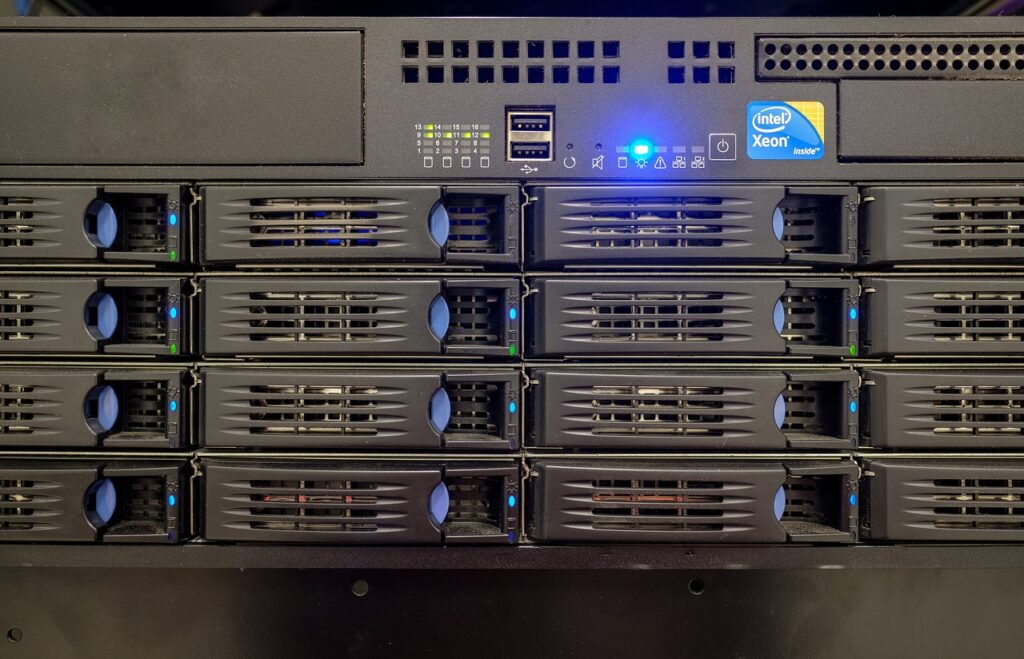Server Based Computing is a centralized computing model where applications and data are stored on a server and accessed remotely by client devices. Server Based Computing is a centralized computing model that enables remote access to applications and data stored on a server.
With this approach, client devices can access and utilize the applications and data without the need for installation or management on individual devices. This method offers benefits such as improved security, simplified management, and increased scalability for organizations. By centralizing resources, Server Based Computing allows for efficient and flexible access to applications and data, enhancing productivity and reducing costs.

This model is commonly used in business environments to streamline IT operations and provide a consistent user experience across different devices and locations.
Evolution Of Server Based Computing
Historical Overview
Server Based Computing has a rich history dating back to the early days of networking.
Key Technological Advancements
The evolution of Server Based Computing has been marked by significant technological advancements.
Benefits Of Server Based Computing
Server Based Computing centralizes data and applications on a single server, making access seamless from any device. This boosts efficiency, enhances security, and reduces costs, creating a streamlined and productive work environment.
Server Based Computing is an innovative technology that offers numerous benefits to businesses of all sizes. Whether you are a small startup or a large enterprise, implementing Server Based Computing can significantly enhance your operations. In this article, we will delve into the key benefits of Server Based Computing and how it can revolutionize your business.
Cost Efficiency
One of the primary advantages of Server Based Computing is its cost efficiency. By centralizing computing resources, businesses can reduce hardware and software expenses. Instead of investing in individual desktops or laptops, users can access applications and data from a central server. This eliminates the need for costly upgrades and maintenance on multiple devices. Additionally, server virtualization allows for optimal resource utilization, maximizing efficiency and reducing power consumption. Overall, Server Based Computing helps businesses save money and allocate resources more effectively.

Scalability
Another significant benefit of Server Based Computing is its scalability. As a business grows, it becomes crucial to accommodate additional users and data without compromising performance. With Server Based Computing, scaling up is seamless. Businesses can easily add more user connections and storage capacity to the central server without disrupting operations. This flexibility ensures that your infrastructure can accommodate growth, enabling you to expand your business without limitations.
Centralized Management
Server Based Computing offers centralized management, which is highly advantageous for businesses with multiple locations or remote workers. Administrators can efficiently manage applications, user access, security settings, and software updates from a centralized location. This streamlined approach minimizes administrative overhead and ensures consistent application deployment and management across the organization. With centralized management, businesses can enhance security, enforce policies, and resolve issues promptly, all while maintaining control and visibility over the entire infrastructure.

Implementation Of Server Based Computing
Implementing Server Based Computing involves setting up infrastructure and addressing security considerations to ensure a smooth operation. The process is crucial in maximizing the potential of server-based systems and ensuring they are secure and efficient. The following sections delve into the specifics of these vital aspects of implementation.
Setting Up Infrastructure
When setting up the infrastructure for Server Based Computing, it’s essential to ensure that the hardware and software components are capable of handling the workload. This includes deploying servers with adequate processing power, memory, and storage, as well as establishing a reliable network infrastructure to facilitate seamless communication between clients and the server.
it’s important to consider the scalability of the infrastructure to accommodate potential growth in users or workload. This may involve the use of virtualization technologies to efficiently utilize resources and easily expand capacity as needed.
Security Considerations
Securing Server Based Computing environments is paramount to safeguard sensitive data and prevent unauthorized access. Implementing strong authentication mechanisms, such as multi-factor authentication, and encryption protocols are crucial in mitigating security risks.

Restricting access based on user roles and implementing robust data protection measures, such as regular backups and disaster recovery plans, can help ensure data integrity and availability in the event of unforeseen incidents. Regular security audits and updates are also vital to address any vulnerabilities and maintain a secure environment.
Challenges Faced
Server based computing comes with its fair share of challenges. Here are some of the common hurdles that organizations may encounter when implementing this technology:
Compatibility Issues
Compatibility issues arise when different devices and operating systems within an organization are not fully compatible with the server-based computing environment. This can lead to functionality limitations and hinder seamless integration, impacting overall productivity.
User Resistance
User resistance is often encountered when transitioning to server-based computing. Employees may be reluctant to adapt to a new system, especially if it requires changes to their familiar workflow. Overcoming this resistance requires effective communication and training to ensure a smooth transition and user acceptance.
Real-world Applications
Server-based computing, also known as client-server computing, has found its way into various industries and has proven to be immensely beneficial. In this section, we will explore some of the real-world applications of server-based computing and how it has revolutionized the way businesses operate in different sectors.

Healthcare Sector
The healthcare sector holds a significant responsibility when it comes to ensuring the well-being of patients. Server-based computing has emerged as a valuable tool in this industry, allowing healthcare providers to streamline their operations and improve patient care. By centralizing data and applications on servers, healthcare professionals can access critical patient records, conduct real-time collaboration, and deliver prompt medical services.
Moreover, server-based computing offers enhanced data security and privacy measures, safeguarding sensitive patient information from unauthorized access. With the ability to access patient records anywhere, anytime, healthcare professionals can make informed decisions and provide personalized care to patients. This technology has revolutionized medical practice, increasing efficiency and reducing the chances of errors.
Education Industry
The education industry has not been left behind when it comes to adopting server-based computing. By utilizing this technology, educational institutions can provide students and staff with seamless access to educational resources, online collaboration tools, and virtual learning environments.
Through server-based computing, educational institutions can efficiently manage student records, curriculum content, and assessments. This centralized approach allows teachers and administrators to access necessary information, create personalized learning experiences, and track students’ progress. With server-based computing, educational institutions can enhance their online learning platforms and provide uninterrupted access to educational resources.

Furthermore, server-based computing ensures data security, protecting sensitive student and staff information from cyber threats. It also simplifies the software deployment process, making it easier for educational institutions to update and maintain applications across multiple devices.
Future Trends
Cloud Integration
Server-Based Computing technology is rapidly evolving with the integration of cloud services. Businesses are embracing cloud solutions for increased flexibility.
Benefits:
- Reduced infrastructure costs
- Enhanced scalability
- Improved accessibility
Enhanced Security Features
Future trends in Server-Based Computing focus on implementing robust security features to protect sensitive data from cyber threats.
Key Security Enhancements:
- Advanced encryption protocols
- Multi-factor authentication
- Intelligent threat detection
Frequently Asked Questions For What Is Server Based Computing
What Is Server-based Computing?
Server-based computing is a model where applications and data are hosted on a central server and accessed remotely by end-users. It’s an efficient way to manage resources, increase security, and simplify maintenance.
What Are The Benefits Of Server-based Computing?
Server-based computing offers enhanced security, centralized management, cost savings, and improved scalability. It allows for easy deployment of applications, reduces hardware requirements, and ensures consistent user experience across devices.
How Does Server-based Computing Differ From Traditional Computing?
In traditional computing, applications and data reside on individual devices, leading to management complexities and security risks. Server-based computing centralizes resources, enabling better control, scalability, and accessibility, enhancing overall efficiency and security.

What Industries Can Benefit From Server-based Computing?
Server-based computing is beneficial for diverse industries including healthcare, finance, education, and retail. It provides secure access to critical data, streamlines operations, supports regulatory compliance, and enhances productivity for various business sectors.
Server Based Computing is a powerful solution that allows businesses to centralize their IT resources and deliver applications and desktops to end-users over a network. By optimizing efficiency and enhancing security, this technology offers numerous benefits to organizations of all sizes.
With its ability to streamline operations and reduce costs, Server Based Computing is becoming increasingly popular in today’s fast-paced digital landscape. Implementing this approach can transform the way businesses operate, leading to increased productivity and improved user experiences. Explore the possibilities of Server Based Computing and unlock the full potential of your business today.
